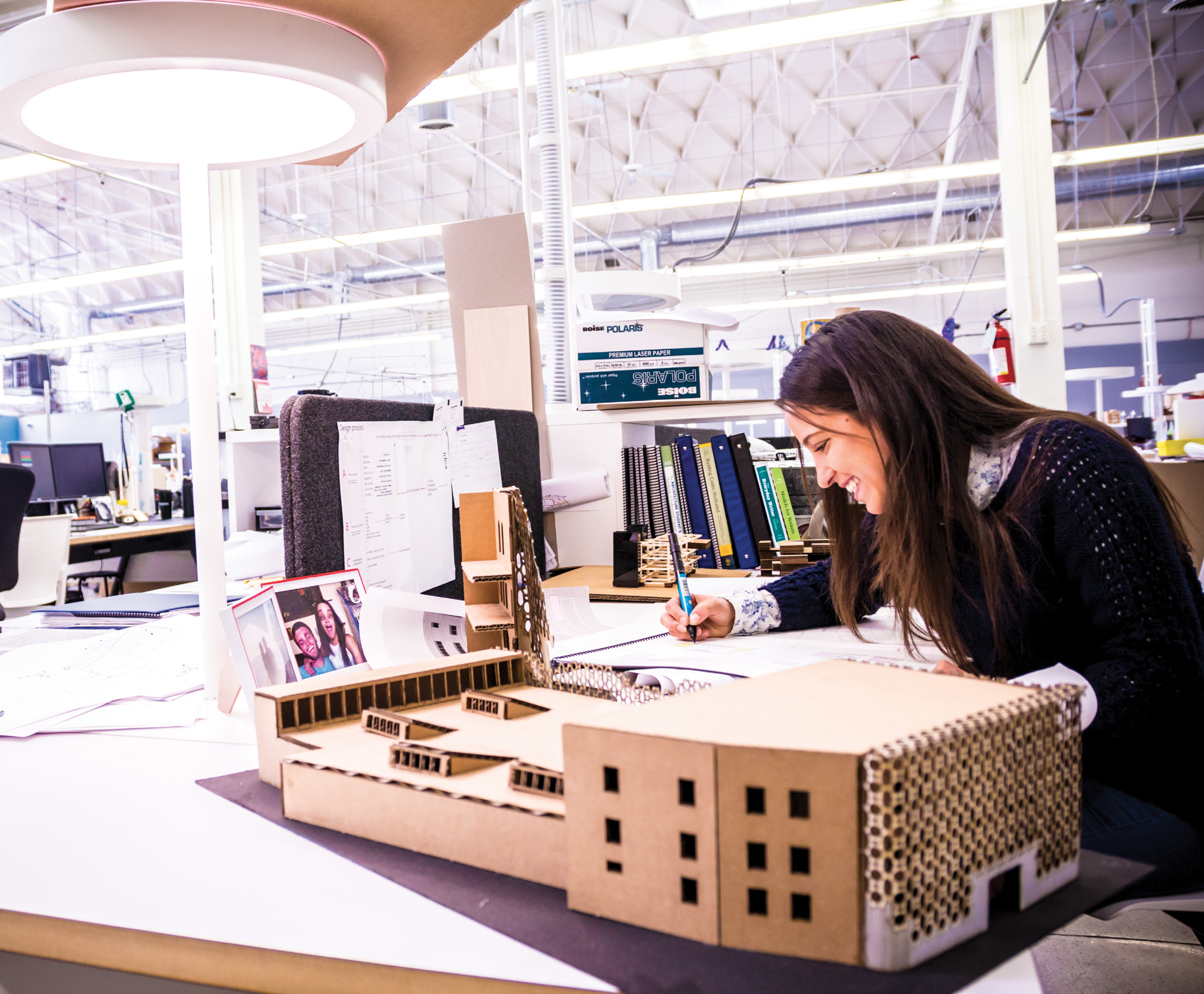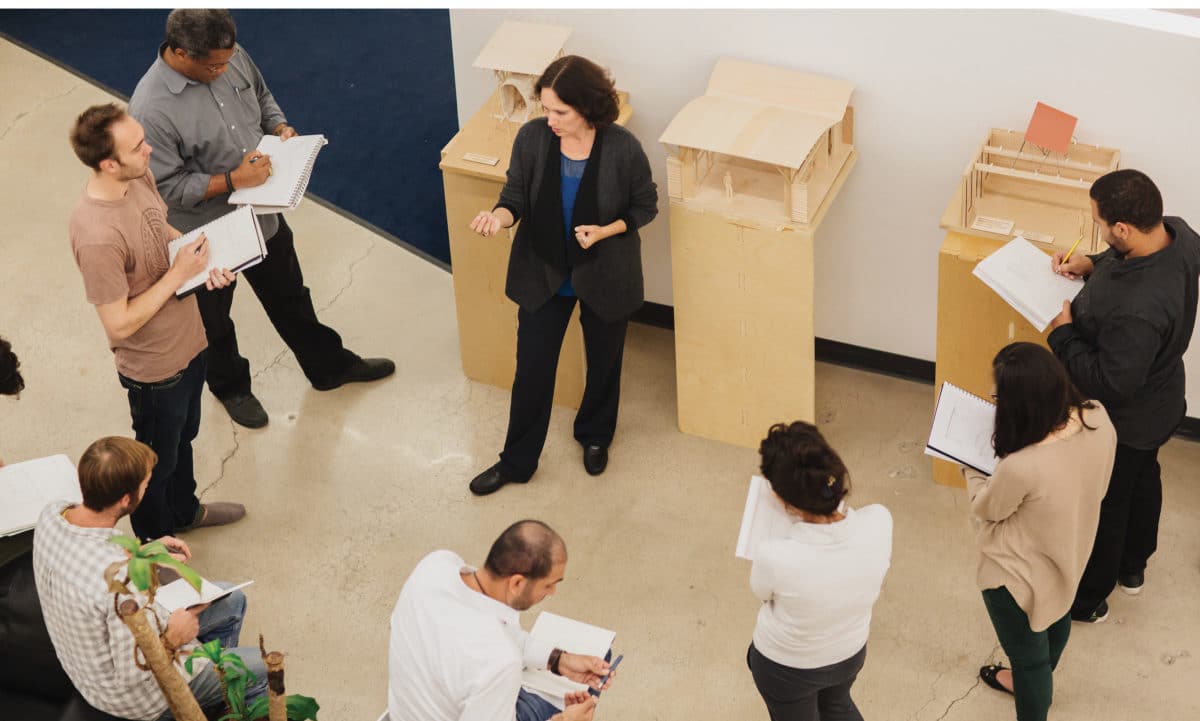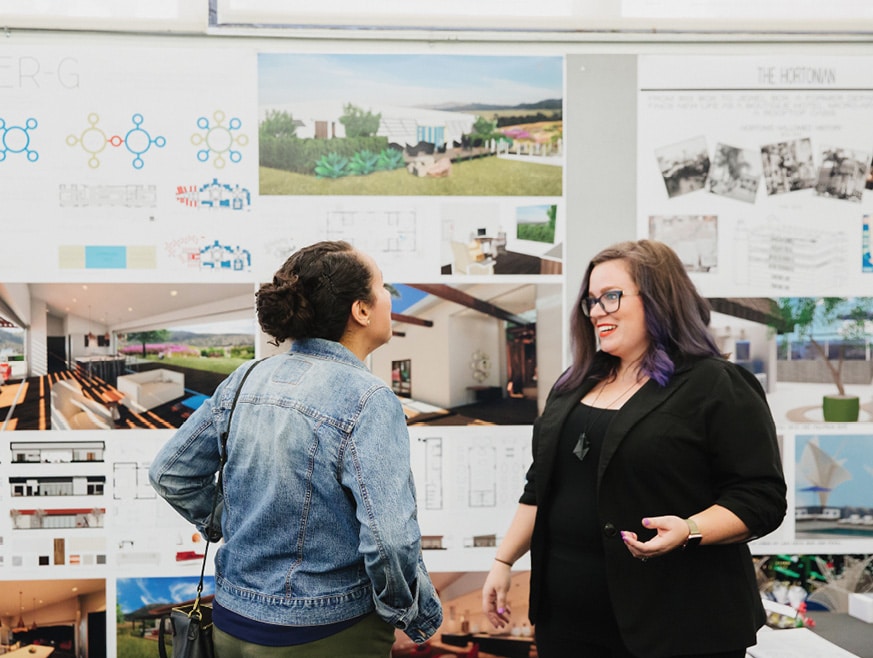The NewSchool of Architecture & Design is training students to not just be great architects and designers, but great leaders in human-centered design.

[Photo: Courtesy of The NewSchool]
“If everybody is thinking alike, nobody is thinking very much,” Marvin J. Malecha says his mother used to always tell him, paraphrasing the famous quote from General George S. Patton. As the president of the NewSchool of Architecture & Design, Malecha carries this wisdom with him every day.
Founded in 1980 by Richard Welsh, the NewSchool has adapted over the decades to train its students to become open-minded leaders in their communities as well as highly skilled professionals. Eight years after its creation, NewSchool’s campus moved from Chula Vista, California, to downtown San Diego’s design district in the 85,000-square-foot campus where it currently resides. In more than three decades, the school has strived to continue challenging and inspiring all who enter its doors.

[Photo: Courtesy of The NewSchool]
A Commitment to Inclusivity
NewSchool’s continued commitment to diversity is one of the ways it stands out from the crowd. The school welcomes students from all over the world and maintains an inclusive and diverse student body and faculty. Five out of eight members of the NewSchool Board of Directors are women, as well as nearly 40% of the teaching faculty. “My job is to be a model for other women, especially for young female students. To show that the world of architecture is not only run by men. We have the responsibility to recognize that,” says Daniela Deutsch, NewSchool professor of architecture specializing in sustainability.
It’s a welcome example in an industry that remains predominantly male. More than 40% of nearly 11,000 architecture degrees in 2012-13 were awarded to women, according to the National Center for Education Statistics, but that number drops to 18% when looking at the number of active professionals in the field. For Malecha, inclusivity isn’t just a numbers game—it’s a necessity. “People learn from each other as much as they learn from a professor or anyone else, so to have a truly diverse studio provides the opportunity to have many viewpoints,” he says.
Faculty at NewSchool come from many backgrounds—from healthy urbanism to neuroscience—and NewSchool offers specialized programs and interdisciplinary courses in its undergraduate, graduate, and continuing education programs to encourage students to explore the possibilities.

[Photo: Courtesy of The NewSchool]
Teaching Responsibility
NewSchool expects its students to be not only great architects, but civically engaged citizens as well. Malecha believes architecture students should be prepared to engage and invest in the prosperity of their neighborhoods. “I like to believe what we’re doing is preparing individuals to be citizen architects and designers—people who will take an active role in their communities and have an impact on the future of their communities.”
Students are expected to explore different schools of thought throughout their time at NewSchool, too. “We are teaching students how to solve real problems out in the field and how to apply all of the ideas and concepts they get in class to specific design problems. It’s almost a revolutionary act in attempting to reform design education,” says Tatiana Berger, professor of architecture.
Third-year design students have the opportunity to spend their spring quarter studying abroad to put what they’ve learned in action, traveling to renowned institutions, such as the Domus Academy in Milan. There they get hands-on experience during Milan Design Week that they wouldn’t get anywhere else, says Elena Pacenti, dean of NewSchool’s School of Design. “It’s a full immersion and a total exposure to design,” she says.

[Photo: Courtesy of The NewSchool]
Looking Ahead
To keep up with a changing world, architects and designers must continue to create works that reflect the attitudes and needs of their communities. To do that, they have to be perceptive of the world they’re building for, understanding its shortcomings and strengths, and use the skills they’ve learned to create more than just buildings; they must create solutions. “What academia needs to be able to do is answer the next question. To do that you have to be able to identify it first,” Deutsch says.
Strong leadership is the difference between being good and being great in architecture. “Leadership [skills are] essential for architecture and design students. Architecture is one of the most collaborative disciplines today,” Berger says. “Architects need to be able to collaborate productively with subcontractors, team members, and—most importantly—with the communities for whom they build.”
Tomorrow’s designers and architects are expected to have more tools at their disposal than ever before, designing works to positively affect all who encounter them. “We want to educate and graduate individuals who will enter the profession ready to lead,” Malecha says. “[We also hope] they have been educated to understand the deeper underpinning of where form and objects come from and how they relate to what people need. If we do this, we will ground ourselves in the community as something valuable.”
Did you know?
NewSchool is rich in diversity. In 2015, more than 100 international students from 26 countries joined the student body, including students from Saudi Arabia, Mexico, Italy, Kuwait, Peru, India, Brazil, Russia, Iran, Turkey, China, Japan, Iceland, Iraq, Venezuela, Vietnam, United Arab Emirates, Australia, South Korea, Libya, Romania, and more.
Read more about The NewSchool of Architecture & Design and catch up on more gb&d education stories.
